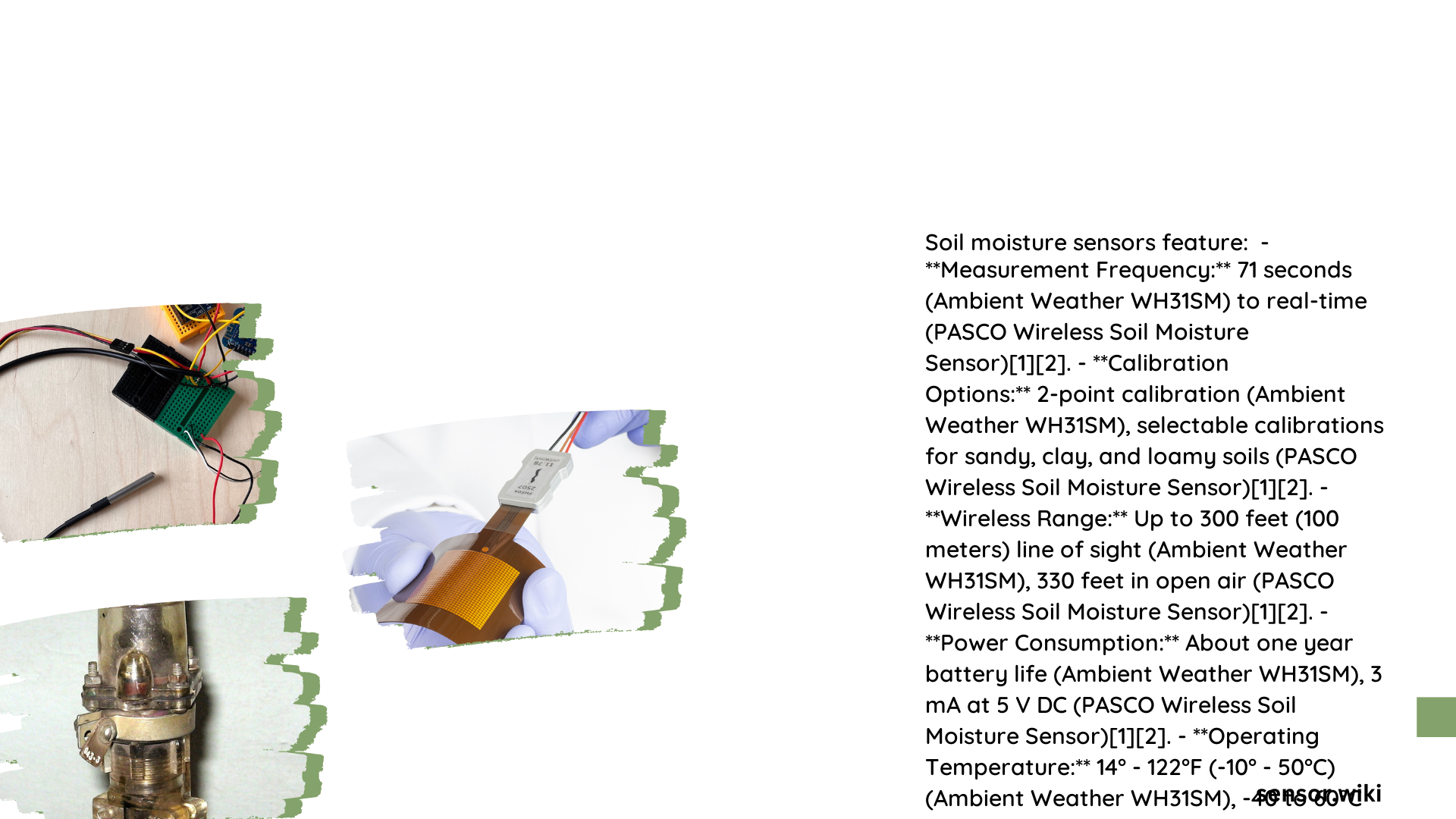Moisture sensors represent sophisticated technological instruments designed to measure water content across various environments with exceptional precision. These advanced devices utilize cutting-edge technologies like Time Domain Transmission (TDT) and capacitive sensing to provide accurate, real-time moisture measurements. Modern moisture sensors offer remarkable features including high-precision measurement ranges, robust wireless capabilities, minimal power consumption, and adaptable calibration methods that ensure reliable performance across diverse environmental conditions.
What Are the Core Measurement Capabilities of Moisture Sensors?
Moisture sensors demonstrate remarkable measurement capabilities that distinguish them in environmental monitoring technologies. Different sensor models provide unique performance characteristics:
Measurement Accuracy Spectrum
- Baseline biSensor:
- Accuracy: ±3% volumetric moisture content
- Measurement Range: 5% to fully saturated soil
-
Sensitivity: Detects changes less than 0.1%
-
Dynamax SM150T:
- Accuracy: ±3% (after soil-specific calibration)
- Measurement Range: 0 to 1.0 m³/m³ (100% volumetric water content)
- Temperature Sensor Accuracy: ±0.5°C
How Do Different Sensor Technologies Operate?
Time Domain Transmission (TDT) Technology
The Baseline biSensor employs sophisticated TDT technology, which involves:
– Sending high-frequency electrical pulses through soil
– Measuring electrical signal modifications
– Calculating precise moisture content without interference from salts or fertilizers
Capacitive Sensing Mechanisms
Capacitive moisture sensors measure water content by:
– Detecting changes in electrical capacitance
– Providing rapid response to moisture variations
– Requiring careful calibration for optimal performance
What Determines Moisture Sensor Wireless Performance?

Wireless moisture sensor performance depends on multiple factors:
| Factor | Impact on Performance |
|---|---|
| Environmental Obstacles | Reduces wireless transmission range |
| Humidity Levels | Potentially interferes with signal strength |
| Terrain Characteristics | Affects signal propagation distance |
Typical Wireless Range Considerations
- Open field conditions: Up to several hundred meters
- Urban/forested environments: Reduced transmission distances
- Recommended signal boosting techniques for extended monitoring
How Efficient Are Moisture Sensors in Power Consumption?
Power efficiency represents a critical feature for long-term environmental monitoring:
Power Consumption Profiles
- Dynamax SM150T:
- Power Supply: 5-14 V
- Current Draw: Approximately 18 mA per second
-
Estimated Long-Term Battery Life: Multiple years with optimized usage
-
Energy-Efficient Design Characteristics:
- Low power draw
- Surge protection mechanisms
- Environmentally protected components (IP68 rating)
What Calibration Methods Enhance Sensor Accuracy?
Calibration techniques significantly improve moisture measurement precision:
- Self-Calibration Methods
- Automatic adaptation to soil conditions
-
Eliminates manual recalibration requirements
-
Soil-Specific Calibration
- Two-point calibration process
- Achieves ±3% accuracy
- Customizes sensor performance for specific environmental contexts
Conclusion
Moisture sensors represent sophisticated technological solutions for precise environmental monitoring, offering advanced features that enable researchers, agriculturalists, and environmental scientists to gather accurate, real-time moisture data across diverse settings.
